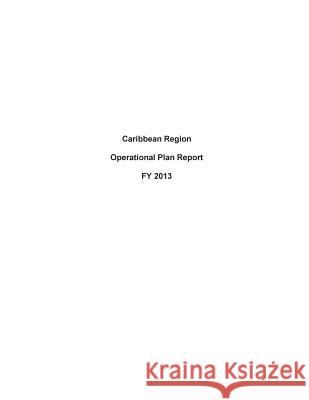Caribbean Region Operational Plan Report FY 2013 » książka
Caribbean Region Operational Plan Report FY 2013
ISBN-13: 9781503193109 / Angielski / Miękka / 2014 / 274 str.
The Caribbean has higher HIV rates than any region outside of sub-Saharan Africa. The adult HIV prevalence of 1.0 percent is almost twice that of North America (0.6), and more than twice that of Latin America (0.4). Unprotected sex between men and women-especially paid sex-is believed to be the main mode of HIV transmission in this region; however, evidence indicates that substantial transmission is also occurring among men who have sex with men. In the eleven countries of the Caribbean Regional Program, data is limited and prevalence rates are missing for the general population and key populations. However, in the countries with data, prevalence rates in the general population range from a low of 1 percent in Suriname to a high of 2.8 percent in the Bahamas . An estimated 60,000 people live with HIV in the eleven countries of the Caribbean Regional program. The HIV epidemic varies within countries and across the region. For example, HIV affects young women 1.2 to 3 times more than young males in the Bahamas and Barbados, while in Jamaica, Suriname and Trinidad and Tobago the reverse is true. Progress has been made in the general population. In 2012, UNAIDS reported a decrease in the incidence of HIV infection among adults in Jamaica and Trinidad and Tobago by 26-49 percent, and over 50 percent in the Bahamas, Barbados, and Suriname. During 2008-2009, mother to child transmission of HIV was reduced to the point where elimination of new HIV infections in children has become a reality. There is also a decrease in the number of persons dying from AIDS-related causes in three countries (decrease of 25-49 percent in the Bahamas and Jamaica, and by more than 50 percent in Suriname). Other gains are not fully understood but may be a result of better data collection methods that now more accurately represent the true epidemic. Despite these gains in the general population, much work needs to be done to improve outcomes for key populations. Men who have sex with men (MSM) and female sex workers (FSW) continue to be disproportionately affected. MSM prevalence varies from 6.7 percent in Suriname to 32 percent in Jamaica. The prevalence rates for MSM in the Caribbean are the highest documented rates in the world. A comprehensive review of HIV disease burden among MSM worldwide found that pooled HIV prevalence ranged from a low of 3% in the Middle East and North Africa to a high of 25.4% of MSM in the Caribbean (Beyrer et al, 2012). FSW prevalence is reported to be as high as 24 percent in Suriname. Stigma and Discrimination affect People Living with HIV/AIDS (PLHIV) and key populations in the region. Homosexuality is criminalized in ten countries in the region (the Bahamas is the only exception) and life imprisonment exists in the penal code in several countries in the region.











